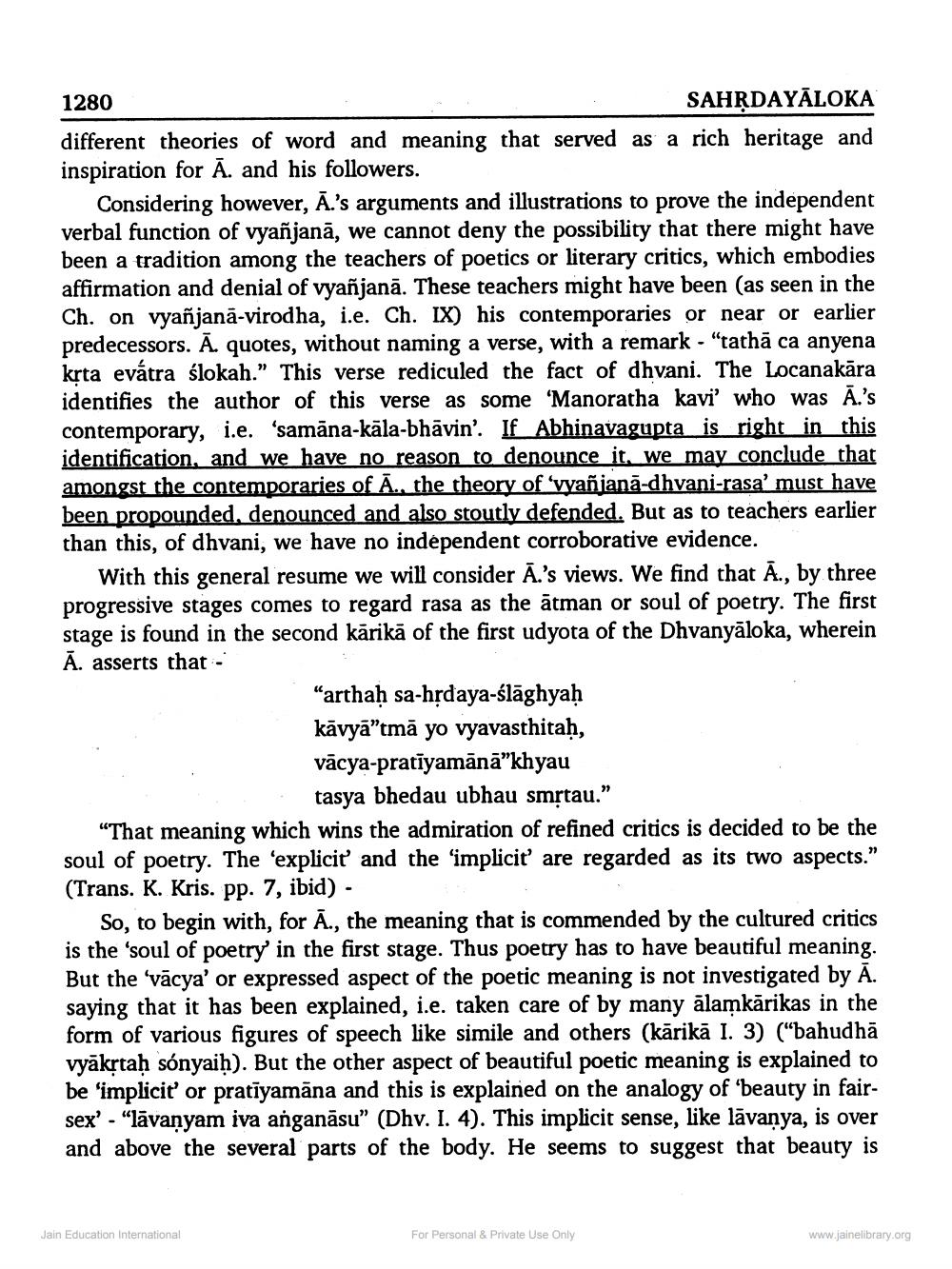________________
1280
SAHĶDAYĀLOKA different theories of word and meaning that served as a rich heritage and inspiration for Ā. and his followers.
Considering however, A.'s arguments and illustrations to prove the independent verbal function of vyañjanā, we cannot deny the possibility that there might have been a tradition among the teachers of poetics or literary critics, which embodies affirmation and denial of vyañjanā. These teachers might have been (as seen in the Ch. on vyañjanā-virodha, i.e. Ch. IX) his contemporaries or near or earlier predecessors. Ā. quotes, without naming a verse, with a remark - "tathā ca anyena krta evátra ślokah.” This verse rediculed the fact of dhvani. The Locanakāra identifies the author of this verse as some 'Manoratha kavi' who was Ā.'s contemporary, i.e. 'samāna-kāla-bhāvin'. If Abhinavagupta is right in this identification, and we have no reason to denounce it, we may conclude that amongst the contemporaries of A., the theory of 'wanian-dhvani-rasa' must have been propounded, denounced and also stoutly defended. But as to teachers earlier than this, of dhvani, we have no independent corroborative evidence.
With this general resume we will consider Ā.'s views. We find that Ā., by three progressive stages comes to regard rasa as the ātman or soul of poetry. The first stage is found in the second kārikā of the first udyota of the Dhvanyāloka, wherein Ā. asserts that -
"arthaḥ sa-hỉdaya-ślāghyaḥ kāvyā”tmā yo vyavasthitaḥ, vācya-pratīyamānā”khyau
tasya bhedau ubhau smộtau.” "That meaning which wins the admiration of refined critics is decided to be the soul of poetry. The 'explicit and the implicit' are regarded as its two aspects.” (Trans. K. Kris. pp. 7, ibid).
So, to begin with, for Ā., the meaning that is commended by the cultured critics is the 'soul of poetry in the first stage. Thus poetry has to have beautiful meaning. But the 'vācya' or expressed aspect of the poetic meaning is not investigated by Ā. saying that it has been explained, i.e. taken care of by many alamkārikas in the form of various figures of speech like simile and others (kārikā I. 3) (“bahudhā vyäkrtah sonyaih). But the other aspect of beautiful poetic meaning is explained to be 'implicit' or pratīyamāna and this is explained on the analogy of beauty in fairsex' - "lāvanyam iva anganāsu” (Dhy. I. 4). This implicit sense, like lāvanya, is over and above the several parts of the body. He seems to suggest that beauty is
Jain Education International
For Personal & Private Use Only
www.jainelibrary.org




